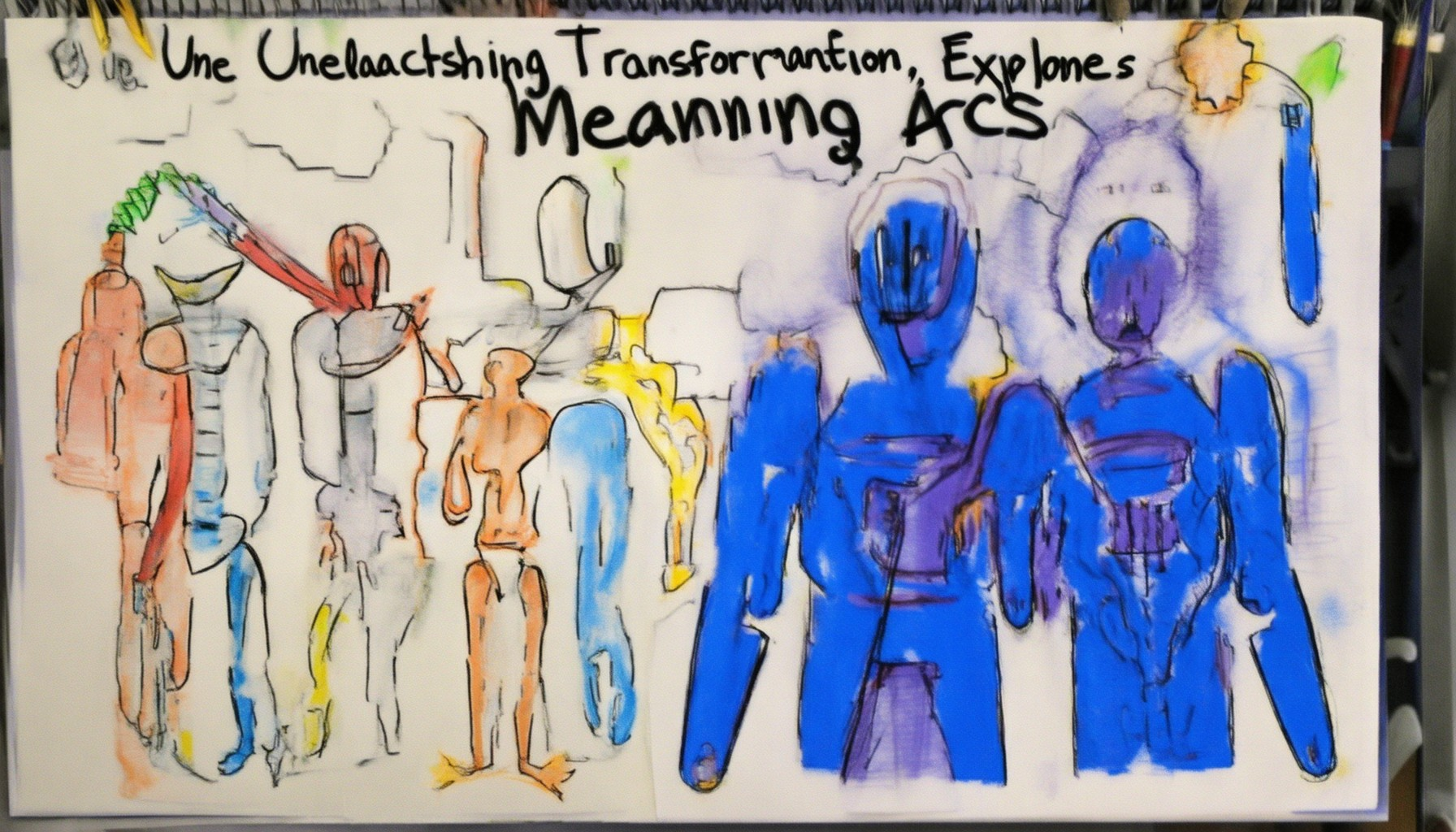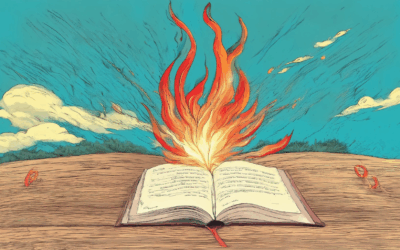Character transformation lies at the heart of compelling storytelling, shaping narratives that resonate long after the final page. Whether through subtle shifts or dramatic evolution, the journey of a character is what often captures our imagination and leaves us reflecting on our own experiences. In this exploration, we delve into the intricate dynamics of character transformation, examining its significance, examples, and the deeper meanings behind such changes. From the psychological undercurrents to the structural arcs that guide these transformations, this article offers a comprehensive lens through which to understand the art of shaping characters who feel alive, real, and relatable. By dissecting the mechanisms of character development, we uncover the strategies that make transformation believable and impactful, ensuring that your stories leave a lasting impression.
Key Takeaways
- Understand the four types of characters in literature: Dynamic, Static, Round, and Flat, each serving unique roles in storytelling.
- Character arcs describe a protagonist’s transformation, adding depth and relatability to narratives.
- Transformational character arcs involve significant personal growth, shaped by challenges and catalyst moments.
- Key elements of a transformational arc include the protagonist’s journey, catalyst events, conflict, climax, and resolution.
- Examples like Scout Finch in To Kill a Mockingbird illustrate effective character development.
- Crafting a transformational arc enhances theme exploration and audience connection.

Example of Character Transformation
A character transformation occurs when a character evolves significantly throughout a story, often leading to a profound change in their personality, beliefs, or behavior. One notable example involves a protagonist whose upbringing and environment shape their initial demeanor, but through a series of experiences, they develop into a more empathetic and compassionate individual.
Consider a character named Alex, raised in a household dominated by sexism and racism. From a young age, Alex internalizes these values, viewing people of different backgrounds with distrust and believing in hierarchical social structures. However, as Alex interacts with individuals from diverse cultures and learns about their lived experiences, they begin to challenge their ingrained beliefs. Through exposure to empathy and understanding, Alex transforms into someone who advocates for equality and acceptance.
This transformation is evident in Alex’s actions and interactions. Initially, Alex might exhibit judgmental behavior toward others, but over time, they start to see the humanity in those they once judged. This shift not only impacts Alex’s personal growth but also influences their relationships, leading to stronger connections with others who embrace inclusivity and compassion.
The key elements of this transformation include:
- The influence of the protagonist’s environment and upbringing
- Exposure to new perspectives and experiences
- Development of empathy and understanding
- Evolution of beliefs and values
- Positive growth and personal development
This type of character arc demonstrates how external factors and personal growth can lead to significant changes, making the character more relatable and inspiring to audiences.
What is a Transformation Character?
A transformation character is a fictional character who undergoes significant personal growth or development throughout the course of a story. This evolution is essential for creating depth and relatability, allowing readers to connect with the character’s journey. Unlike static characters, transformation characters change in response to experiences, challenges, and personal reflection, making them more dynamic and believable.
The Importance of Transformation in Stories
Transformation plays a crucial role in storytelling, as it allows characters to grow and develop in meaningful ways. Without transformation, characters may feel flat, failing to engage readers emotionally. Transformation also serves as a reflection of the human condition, showing how individuals adapt to change and evolve over time.
Examples Across Different Genres
- Literary Fiction : Characters in novels like To Kill a Mockingbird or Pride and Prejudice undergo transformation. Scout Finch learns empathy and understanding, while Elizabeth Bennet evolves from societal expectations to self-awareness.
- Fantasy/Superhero Genres : In Spider-Man or Game of Thrones , characters transform physically and mentally. Peter Parker becomes a responsible hero, while Daenerys Targaryen confronts power and loss.
- Romance : Novels such as 50 Shades of Grey depict characters transforming their attitudes toward love and relationships.
- Thriller/Mystery : Agatha Christie’s Hercule Poirot evolves from a retired detective to a seasoned investigator, showcasing his mental and observational growth.
Creating Transformational Characters
To effectively create transformational characters, consider the following tips:- Establish a Clear Arc : Outline the beginning, middle, and end of your character’s journey.- Introduce Conflicts : Use challenges or opposition to drive character development.- Show Growth Over Time : Demonstrate subtle changes in behavior, thoughts, or emotions.- Provide Depth : Allow characters to have flaws and vulnerabilities, making their transformation more authentic.
Conclusion
Transformation characters are integral to compelling narratives, offering readers a journey of self-discovery and growth. By thoughtfully developing these characters, authors can create stories that resonate deeply with audiences, leaving a lasting impact.

Transform Character Meaning
Transform character refers to the profound evolution or significant internal change experienced by a character throughout a narrative. This evolution typically arises from conflicts, pivotal events, or transformative revelations, shaping the character’s journey and depth.
Key Aspects of Transform Character
- Internal Growth: Characters often undergo personal development, moving from one state to another due to external pressures or self-discovery.
- Conflict Resolution: Major life challenges or moral dilemmas can lead to character transformation, teaching them lessons that shape their future actions.
- Revelation: A sudden insight or realization can trigger a significant shift in a character’s perspective and behavior.
Examples of Transform Character
One notable example is Hamlet by William Shakespeare, where Prince Hamlet transforms from a hesitant and melancholic individual into a determined and vengeful leader. This transformation is driven by his father’s ghost and his exposure to Claudius’ deceit.
Importance in Storytelling
Transform character is essential in crafting engaging narratives. It allows readers to connect with characters on a deeper level, observing their growth and understanding their motivations. This depth enhances the emotional resonance of the story and keeps audiences invested in the characters’ journeys.
Practical Application
When developing your own stories, focus on giving characters meaningful arcs. Consider how their experiences will influence their decisions and interactions. Use settings and conflicts strategically to push your characters toward transformation.
For more insights into effective storytelling techniques and character development, visit James Whitfield Thomson’s website . Explore his literary reflections and gain practical advice for writers seeking to master the art of character transformation.

Understanding the Four Types of Character Development
In literature, character development is crucial to creating relatable and engaging narratives. Here are the four primary types of characters, each serving distinct purposes in storytelling:
- Dynamic Character: These are characters who undergo significant transformation throughout the story. They often face internal or external conflicts that lead to personal growth. Examples include Scout Finch in To Kill a Mockingbird and Atticus Finch himself, who evolve as the story progresses.
- Static Character: In contrast, static characters remain unchanged. Their personality and behavior don’t develop significantly. While they may play supporting roles, they don’t contribute much to the plot’s progression. An example is Miss Maudie in Gone with the Wind .
- Round Character: Round characters are multi-dimensional and exhibit depth. They possess complex traits and motivations, making them believable and engaging. Atticus Finch is a classic example, showcasing both his moral integrity and his struggles.
- Flat Character: Flat characters lack depth and are often used for comedic effect or to serve specific plot functions. Their personality remains consistent and unchanging. A notable example is Mr. Darcy’s friend in Pride and Prejudice , who is defined solely by his wealth and status.
At James Whitfield Thomson , we explore the nuances of character development, offering insights and tips for aspiring writers. Our resources delve into how to create dynamic and round characters that resonate with readers, ensuring your stories are both compelling and memorable.
What Is Called When a Character Changes?
A character arc refers to the transformation or evolution of a character throughout the course of a story. This term describes how a character begins as one type of individual and gradually develops into a different kind of person in response to the events and challenges presented in the narrative.
Key Aspects of a Character Arc
- Definition: The character arc captures the journey of growth, degradation, or self-discovery experienced by the protagonist.
- Importance: A well-defined character arc adds depth and relatability to the character, enabling readers to connect with their experiences and motivations.
- Types:
- Positive Arc: The character improves morally or intellectually, often achieving self-realization.
- Negative Arc: The character worsens, descending into vice or corruption.
- Flat Arc: The character remains unchanged, though this is less common in developed stories.
- Examples: Characters like Harry Potter, Atticus Finch, Jay Gatsby, and Iago each undergo distinct transformations that shape their narratives.
- Impact on Storytelling: A character arc enriches the plot, allowing for deeper exploration of themes and more meaningful character-driven conflicts.
Why Character Arcs Matter
Character arcs are crucial in shaping engaging and believable narratives. They provide a framework for exploring human behavior, emotions, and growth, ultimately enriching the storytelling experience.

What is a Transformational Character Arc?
A transformational character arc is the emotional and psychological journey a protagonist undergoes throughout a story, leading to significant personal growth or a profound change in their outlook on life. This type of arc is central to compelling narratives and is often the driving force behind engaging characters and plot development.
Key Components of a Transformational Character Arc
- Protagonist’s Journey : The protagonist begins with certain traits, beliefs, or flaws that define their personality. Over the course of the story, these attributes evolve as they face challenges and learn from their experiences.
- Catalyst for Change : A triggering event or incident occurs, often referred to as the “catalyst,” which forces the protagonist to confront their limitations or beliefs. This moment acts as the turning point in their journey.
- Rising Action and Conflict : Through a series of events and conflicts, the protagonist tests their resolve, faces fears, and learns new skills or perspectives. These challenges push them beyond their comfort zones, forcing them to grow.
- Climax and Resolution : The protagonist reaches a peak point of emotional intensity, often facing their greatest fear or obstacle. This moment typically marks the culmination of their transformation.
- Resolution and Legacy : After overcoming the final challenge, the protagonist emerges transformed. Their growth is evident, and they may adopt a new philosophy or approach to life.
Examples of Transformational Character Arcs
- In The Hero with a Thousand Faces by Joseph Campbell, the hero’s journey embodies a transformational arc, moving from innocence to self-discovery and empowerment.
- The character development in To Kill a Mockingbird showcases Scout Finch’s transformation from a naive child to a compassionate and understanding individual.
- The Great Gatsby illustrates Jay Gatsby’s evolution from a broken man to a symbol of hope and resilience.
Importance of a Transformational Character Arc
A well-crafted transformational character arc adds depth and relatability to your characters. Readers connect with protagonists who undergo visible growth, as it mirrors their own experiences and aspirations. This type of arc also enhances the story’s themes, providing a clear narrative thread that ties together the plot and emotional beats.
By thoughtfully designing a transformational character arc, you can create a memorable and impactful story that resonates with audiences long after the final page.





0 Comments